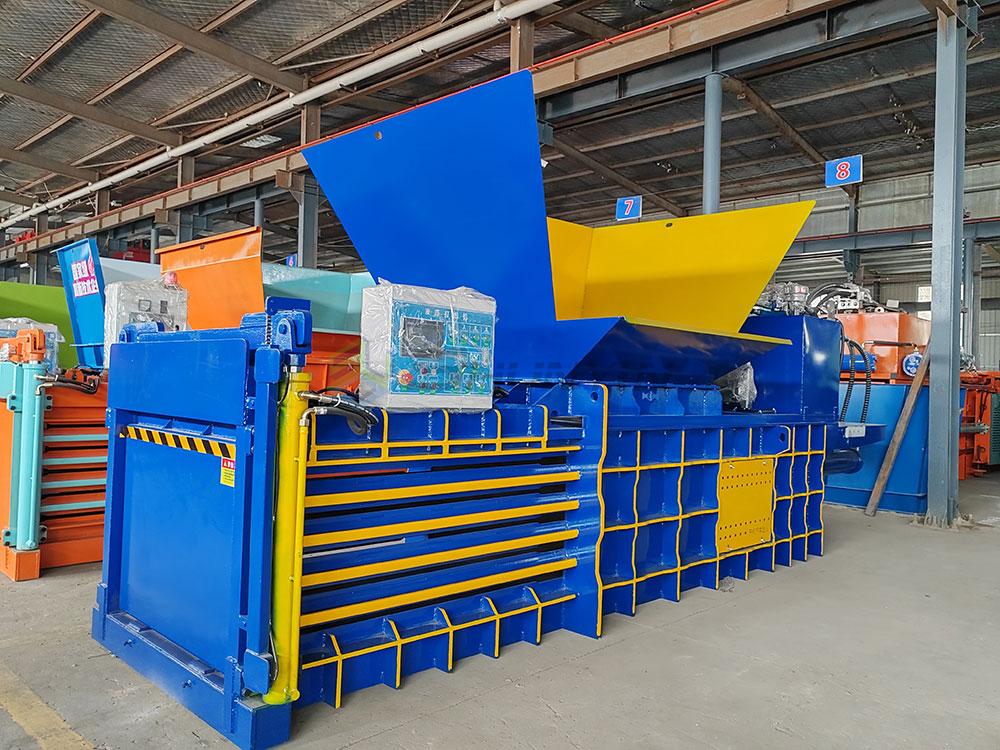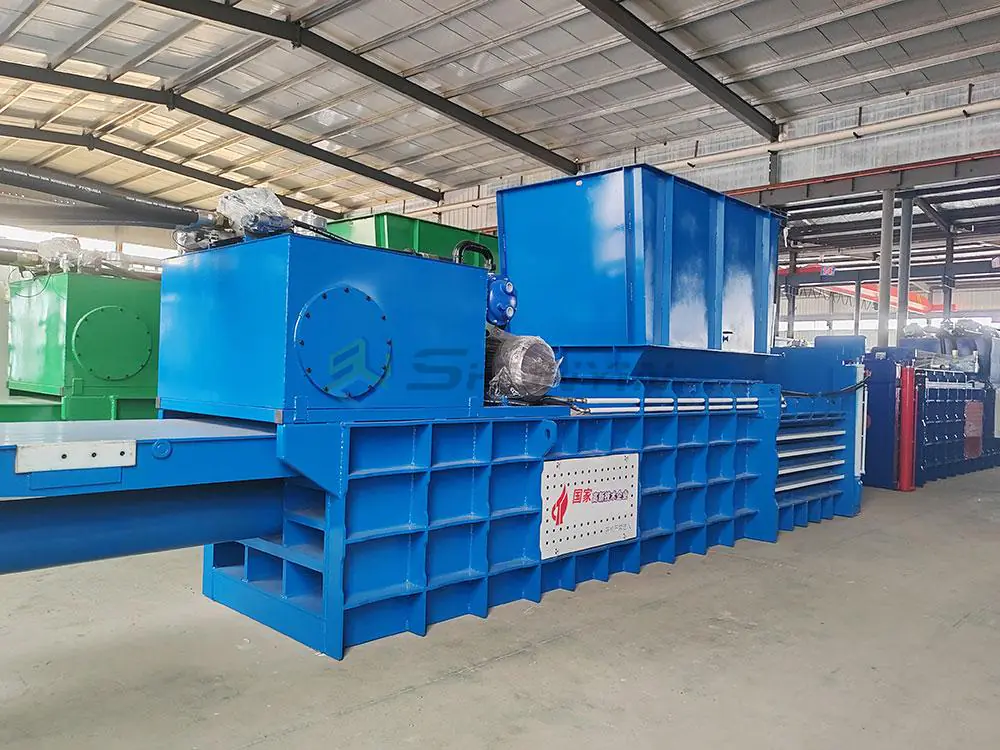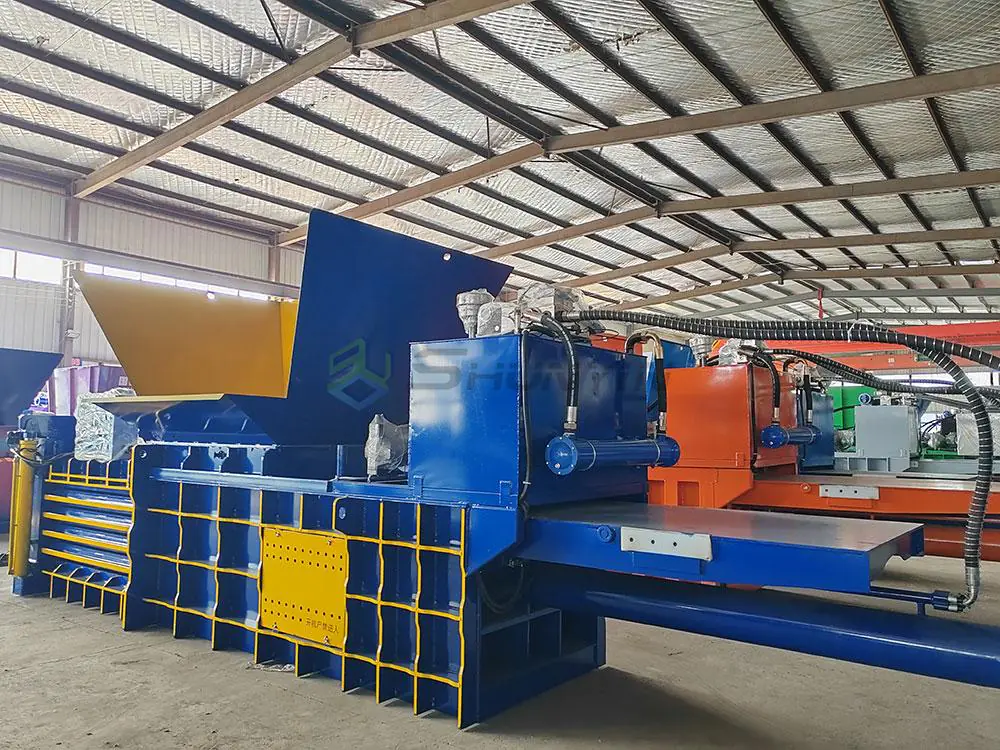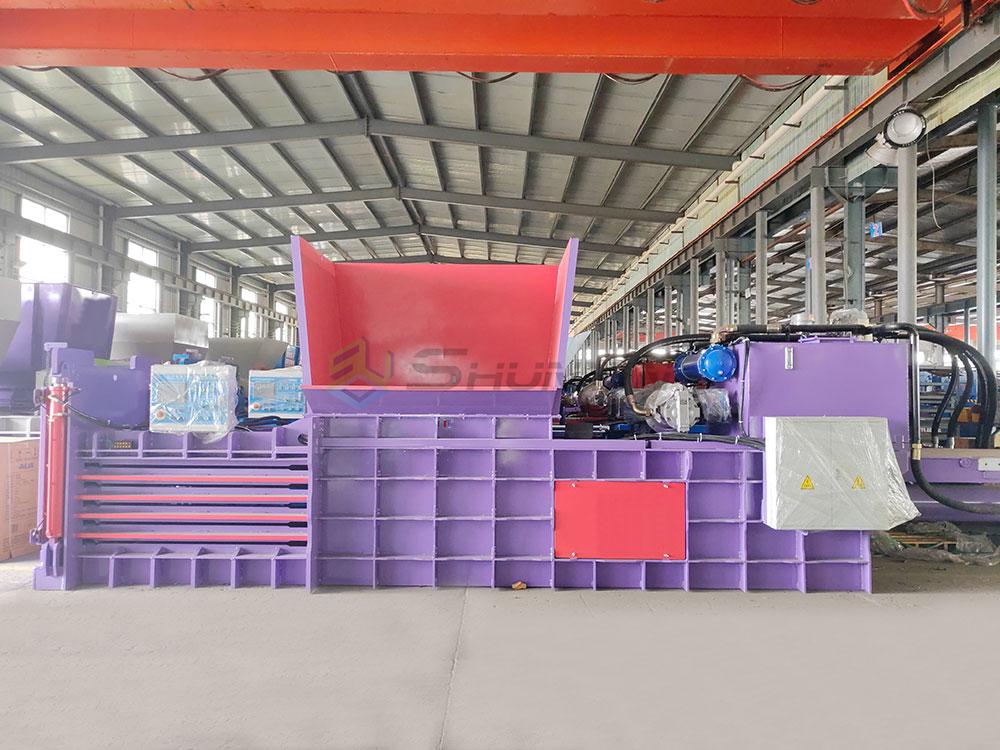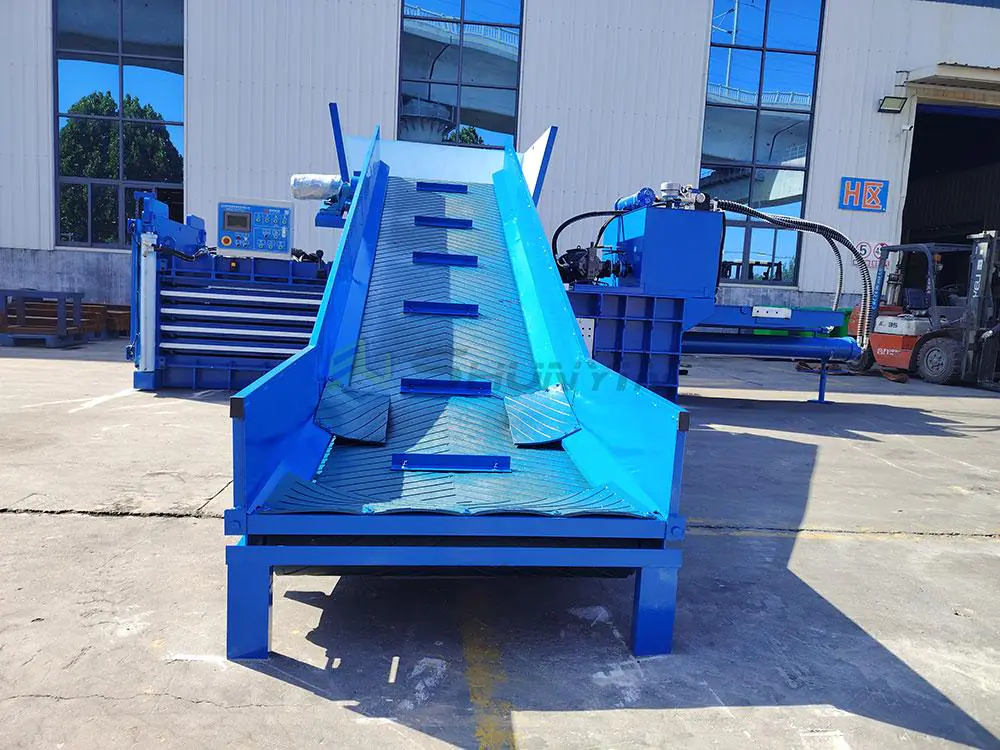Creating space in your warehouse feels impossible when cardboard piles up. Manual baling slows operations and raises labor costs. An automatic tying machine solves this frustration efficiently. Imagine eliminating hours of manual labor daily.
Horizontal balers with auto tying systems compact recyclables using hydraulic pressure, while sensors trigger wires to bind finished bales automatically—boosting productivity by up to 70% compared to manual alternatives by minimizing human intervention.

Upgrading waste management starts with smart equipment choices. Last year, our engineer Li visited Montreal and saw workers struggling with manual straps. Their complaints about wrist injuries sparked our auto-tie innovation. Read below to discover how automation creates safer, profitable operations.
What Is An Auto Tie Baler?
Stubborn stacks of packaging materials frustrate warehouse managers everyday. Manual tying risks injuries and uneven bale density. Auto-tie balers prevent these headaches.
Auto tie balers use programmable sensors for fully automatic baling—loading, compressing, and binding materials without manual assistance, turning chaotic waste into uniform bales 24/7.

How Auto-Tie Systems Transform Logistics
Vertical and horizontal auto-tie models both streamline workflows but suit different spaces:
| Feature | Vertical Balers | Horizontal Balers |
|---|---|---|
| Space Needed | Compact (small shops) | Larger (warehouses) |
| Daily Capacity | 5-10 tons | 15-50+ tons |
| Material Flexibility | Limited (cardboard) | All recyclables (including plastics) |
| Automated Binding | Semi-automatic | Fully sequenced workflow |
Horizontal units dominate industrial settings because their wider chambers compress mixed plastics/cardboard faster—perfect when you’re processing trailers of unboxed shipping pallets. Our Canadian client Scott reduced baling costs 53% using this system last quarter.
Core Mechanism Differences
Crawler feeding systems versus conveyor belts impact workflow. Hydraulic valves initiate compression while infrared eyes detect bale-size perfection. The exact moment compaction ends? That’s when air-powered piston pusher withdraws—triggering spring-operated wires to wrap the bale entirely hands-free. Maintenance points? Just three weekly greasing spots highlighted in our manuals. Troubleshooting guides avoid downtime—an operator saved 9 hours/monthly using our WhatsApp support. Need preventative care tips? Message our engineers anytime.
What Is An Automatic Baler?
Managers lose sleep seeing idle machines under blizzard conditions. Downtime criples recycling revenues.
Automatic balers continuously cycle material from input to ejection via sensors and timing circuits—processing high volumes autonomously like 24-hour tireless assistants eliminating labor bottlenecks.

Why Invest in Full Automation
Manual-loading processes delay other productive tasks—workers watch machines instead of sorting or shipping. Reallocating labor consistently returns ROI within 18 months.
| Task | Manual Baler Handling | Automated Baler Handling |
|---|---|---|
| Loading Time | Continuous | Initial setup only |
| Worker Injuries (Annual) | 8-12 per facility | Near zero |
| Daily Output Range | 3-7 tons | 8-30 tons |
| Utility Cost | Higher (longer cycles) | Lower (optimized) |
Intelligent power management minimizes kWh usage via variable-speed hydraulics. A Michigan recycler saved $16,500/year after switching electricity providers—we helped analyze usage reports for negotiation. Want your facility assessed? Email us consumption logs.
How Do Auto Balers Work?
Experienced operators fear sudden malfunctions. Clear workflows become critical during high-volume seasons—Vancouver snowstorms doubled baling demands last January.
Auto balers sequence: loading via conveyor, compression in multiple stages by hydraulic cylinders, precise sensor-triggered tying strokes, finally ejection onto transport pallets—all managed through a centralized PLC system eliminating coordination slips.

Breaking Down Operational Security
Safety first—modern balers include interlock mechanisms preventing access during compression. Even when systems logically "sleep" 65 minutes nightly for cooling, partial-automation remains common in critical phases.
Safety Compliance Checklist
Three-point emergency stops tested hourly matter—OSHA violations cost $15K+/incident. Cycle sensors prevent overfill mishaps while pressure override valves avoid burst accidents. Monthly maintenance? ShunYin Technician Wayne suggests:
- Conveyor belt tension checks
- Hydraulic oil particle testing
- Wire dispenser calibration
Our Osaka partnership saw clients reduce accidents by 74% with an included AI camera spotting abnormal movements. Dangerous corner? We’ll add buffer sensors free.
How To Tie A Cardboard Baler?
Workers struggle with loose wires jamming production. Badly tied bales collapse during transit—damaging goods.
Tie cardboard properly via consistent tension settings and lateral position adjustments securing wires around dense materials—balers should only fire strapping after compression phase completion ensures stability without slippage.

Troubleshooting Tying Errors
Operators sometimes miss configuration thresholds causing retail bale headaches:
| Symptom | Common Cause | Fix |
|---|---|---|
| Wires snapping | Over-tightening | Reduce strap tension by 15% |
| Uneven knot placement | Sensor misalignment | Clean IR lenses monthly |
| Jams during binding | Speed-conveyor mismatch | Synchronize feed gaps |
Second-shift bind failures plague some facilities. Documented performance logs assist technicians—we mailed diagnostic kits detecting voltage drops. Observe maintenance? Send videos via WhatsApp for instant solutions.
Conclusion
Embracing horizontal balers with auto tying cuts labor costs while boosting efficiency globally. Contact ShunYin Machinery when ready to update your waste management line.


